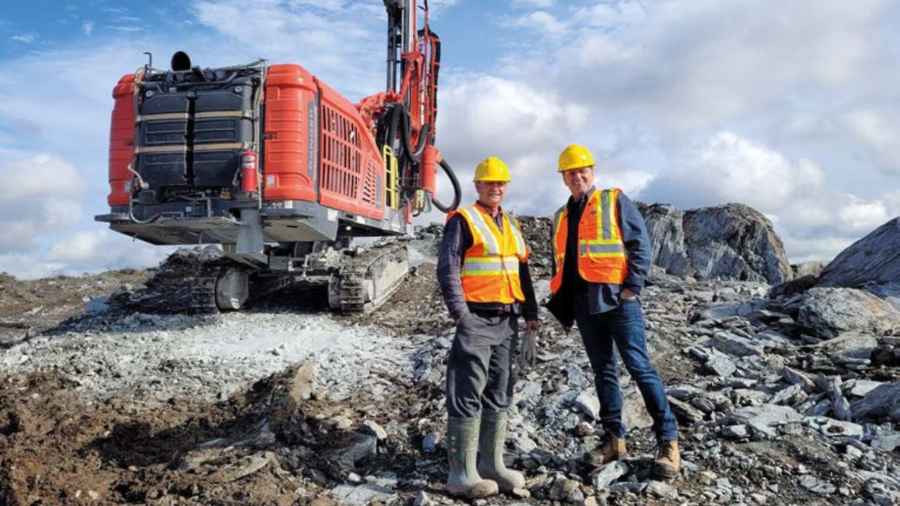The Sudbury recipe

Laurentian University campus. CREDIT: LAURENTIAN UNIVERSITY
Sudbury has a long history as an important mining centre in Canada, with the first of many nickel-copper mines, Murray, built in the late 1880s.
But over the past 15 years, the city has become known as a mining innovation hub, with a dense and extensive network of service and supply companies and research institutions whose influence stretches well beyond northern Ontario.

Science North building. CREDIT: GREATER SUDBURY DEVELOPMENT CORP
The feat is all the more impressive considering the price of nickel – the commodity that was most responsible for Sudbury’s rise as a mining centre – is far from booming. (It was US$6.21 per lb. at press time.) Ian Wood, director of economic development at the city of Greater Sudbury, says that the reason for the strength of the city’s mining service and supply sector stems from the needs of thetwo dominant nickel giants in the area – Glencore (formerly Falconbridge) and Vale (formerly Inco),

The Vale Living with Lakes Centre. CREDIT: GREATER SUDBURY DEVELOPMENT CORP
As the two companies externalized things like maintenance and equipment supply over the years (a global trend), the people who used to perform these functions as employees started their own businesses to serve the miners, rather than moving away.
“In the 1990s, we identified the fact that we had this network of small and medium-sized enterprises that were doing an effective job supplying our two major companies and honing their expertise, their skills through innovation,” Wood says. “But at that time they really only had two customers.”
The worry was the lack of sustainability for both businesses and the wider community whenever there was a downturn.
“It’s a cyclical industry so some of those slowdowns, especially in the late ’90s, there were some companies that basically said, ‘Well what do I do – 80% of my production is going to Vale and if they have an extended shutdown, I’m laying people off.’” In response, the city’s economic development group, and leaders at Laurentian University and at the service and supply companies themselves started thinking about how they could shift from a local, two-customer base to reach regional, national, and even international customers.
On the supplier side, the Sudbury Area Mining Supply and Service Association (SAMSSA) was formed about 15 years ago and has been instrumental in helping local suppliers sell their cutting-edge technology internationally. Over the past 5-10 years, Laurentian University, has transformed itself into “a hotbed of mining research.” Its outreach to the wider mining industry has garnered $10 million plus donations from mining magnates David Harquail, Ned Goodman, Stan Bharti and Rob McEwen and their families.
The Centre for Excellence in Mining Innovation (CEMI) works to address the commercialization gap to help bring new and innovative technologies to market, while the Norcat test mine allows companies to test new technology and to shorten the innovation cycle to get products from the R&D stage into miners’ hands more quickly. MIRARCO (Mining Innovation Rehabilitation and Applied Research Corp.), meanwhile, is all about pure research and development.
And the provincially, federally and municipally funded Northern Ontario Exports program links suppliers across a network of five northern Ontario cities: Sudbury, Timmins, North Bay, Thunder Bay and Sault Ste. Marie. The program helps companies find mentors and put together export plans.
“That’s been tremendously effective,” Wood said of the sixyear- old program. “We’ve got some companies that are seeing the majority of their markets now are outside the country.”
He adds: “The last large strike at Vale in ’09/’10 was instructive because it truly meant that many of the companies were able to weather the storm.”
Lastly, Wood says a spirit of collaboration and sharing of information has been extremely important to growing the cluster.
“We’ve moved from a situation of competition with the guy across the street to a true understanding that the competition is global, and that if we can learn from each other in the community, we can all be more competitive on a global basis.”
Now, Wood says he gets several inquiries a year from other communities around the world looking to replicate the “Sudbury recipe.”
However, the city is in a pretty unique situation thanks to its location in the Sudbury Basin.
“The fundamental piece for us is the fact that we’re basically a full-service regional capital sitting right in the mining camp,” Wood says. “So the ability for companies to experiment and to make a deal with other companies to get something at the ore face and try it out, is much simpler because you’re not remote from where it’s happening.”





Comments